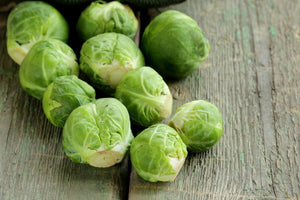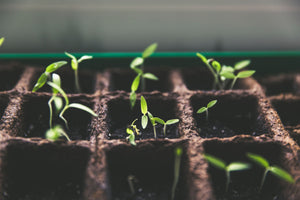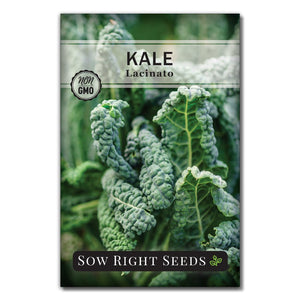Indoor Lettuce Farming: Your Key to Fresh Greens All Winter Long!
Leafy greensWant fresh lettuce year-round? Start growing lettuce indoors! Indoor gardening means no competing with bugs and rabbits or watching the weather forecast. We’ll cover the top tips for growing lettuce indoors year-round, from sowing seeds to harvesting for continued growth.

In other climates, gardeners are growing lettuce outdoors in January. But here in the Midwest, we have to grow lettuce indoors during the winter months. Luckily for us, there are many ways to successfully grow lettuce indoors for a year-round harvest.
Lettuce can be grown indoors in something as simple as a plastic cup or an elaborate hydroponic system. Just like outdoor gardening, you have options to make indoor gardening fit into your lifestyle.
Indoor gardening can keep your lettuce pest-free, and with moderate temperatures, it will grow without bolting or becoming bitter-tasting.

How to Grow Lettuce Indoors From Seed
Starting lettuce from seed indoors is easy to do and can be very economical, depending on your setup. Growing lettuce from seed will also give you the most return for your effort.
First, you’ll want to choose lettuce seeds for varieties that grow well indoors. Leaf lettuces are easier to grow indoors than head lettuces. Here are our favorite lettuce varieties for growing indoors.
Best Varieties of Lettuce to Grow Indoors
Black Seeded Simpson
Black Seeded Simpson is one of the most popular lettuce varieties for growing indoors. It is quick growing and can be harvested at any stage. It is known for its frilly leaves and sweet taste. To harvest, cut off the outer leaves and allow the inner core to keep growing.
Lolla Rosa
Lolla Rosa lettuce is an excellent variety for growing indoors. Its magenta and green coloring is beautiful, and has an excellent crunch. It is a true “cut and come again” lettuce that will regrow as you harvest the outer leaves.
Heirloom Blend
Our Heirloom Blend is a mix of lettuces. With a variety of leaves and colors, it will be a refreshing harvest all through winter. This would be a good mix to grow in a tray.
Green Salad Bowl
This fast-growing variety is perfect for growing indoors in compact spaces. The frilly leaves of Green Salad Bowl can be harvested when they’re still small, which means you’ll be eating fresh salad in no time.
Red Salad Bowl
Red Salad Bowl lettuce is another fast-growing variety that can be cut at any stage. The beautiful burgundy leaves have a sweet flavor.
Red Romaine
Crisp Red Romaine lettuce leaves add a beautiful color contrast to wake up your plate. Romaine lettuce has smooth edges and makes the perfect layer for BLT sandwiches.
Starting Lettuce Seeds Indoors
Moisten the soil or seed starting mix.
Press lettuce seeds into the soil and spray with water.
Place grow lights over the seeds.
Use a humidity dome until the seeds have sprouted and are a few inches tall.
Thin lettuce seedlings to 1 inch apart.
Keep the soil moist, and don’t allow it to dry out.

Growing Lettuce Indoors
Containers
Choosing the right container is essential for successful indoor gardening. You need sturdy enough materials to control the dirt and water and avoid a messy situation.
If you opt for an indoor hydroponic system, choose one that fits your space. There are small table-top and tall tower options to choose from.
Containers for growing lettuce in soil need to be at least 6 inches deep with suitable drainage holes. Lettuce plants don't have deep roots, so shallow pots and trays will be adequate.
The smallest and most basic container is a plastic cup. We often use this method to start tomato plants. You can poke holes in the bottom of the cup and place it in a tray to catch water.
Larger pots and trays can be used as well. Just consider where you will put them and how much space you have.
Soil
Use a lightweight seed starting mix or potting soil. You don’t need a soil or potting mix with fertilizer when first starting lettuce seeds. Soils with too much fertilizer can burn tender seedlings. You can make your own seed-growing medium with our favorite mix recipes.
Light
In most locations, grow lights are essential for growing lettuce indoors. Lettuce needs full sun, which is 8 hours outdoors. Indoor grow lights may need to be left on for 12 to 14 hours a day to get the same effect as sunlight.
Lettuce seeds need light to germinate, so you will want to set up your grow lights when you plant. Keep the lights close enough to prevent the seedlings from stretching and becoming leggy.
As the lettuce plants grow, you can adjust the lights and move them further away. You can read more about using indoor grow lights.
Temperature
Lettuce will grow well in average home temperatures between 65 and 72ºF.
Watering
Lettuce is more than 80% water, which means the plants will need sufficient water to stay crisp. However, you don’t want to overwater. The soil needs to remain moist but drain well to avoid root rot.
Lettuce grown in water solutions needs to be refreshed frequently to avoid algae growth.
Fertilizer
Once the lettuce seedlings have true leaves, you can apply fertilizer. A balanced fertilizer of 5-5-5 every two weeks is usually sufficient. Consider the type of fertilizer you use to keep your lettuce edible without any harmful substances.
Hydroponic lettuce plants will need a nutrient solution specifically formulated for hydroponics.

Harvesting Indoor Lettuce
Most lettuce grown indoors can be harvested at any time. This includes lettuce grown in hydroponic systems as well as soil. The best way to harvest lettuce so that it continues to grow is to cut only the outer leaves.
Cut the outer lettuce leaves about 1 inch above the growing medium.
Leave at least 1/3 of the plant to keep growing.
Succession Sowing
Instead of planting all your lettuce at once, plant a few seeds every 7 to 10 days. Succession sowing will give you lettuce plants in various stages of growth for a continual harvest over a longer period of time.
Tip for pet owners:
Pets can become indoor garden pests! Cats like to chew on fresh greens, and unfortunately, I’ve lost a few seedlings to curious cats. You may want to give them their own supply of cat grass.

Lettuce is a healthy vegetable full of vitamins and nutrients. Having a ready, fresh supply of crisp, tasty leaves makes it worth growing all year round. With these tips on growing lettuce indoors, you can harvest it even during the coldest winter months. Try growing lettuce indoors and enjoy gardening all year round.








Leave a comment